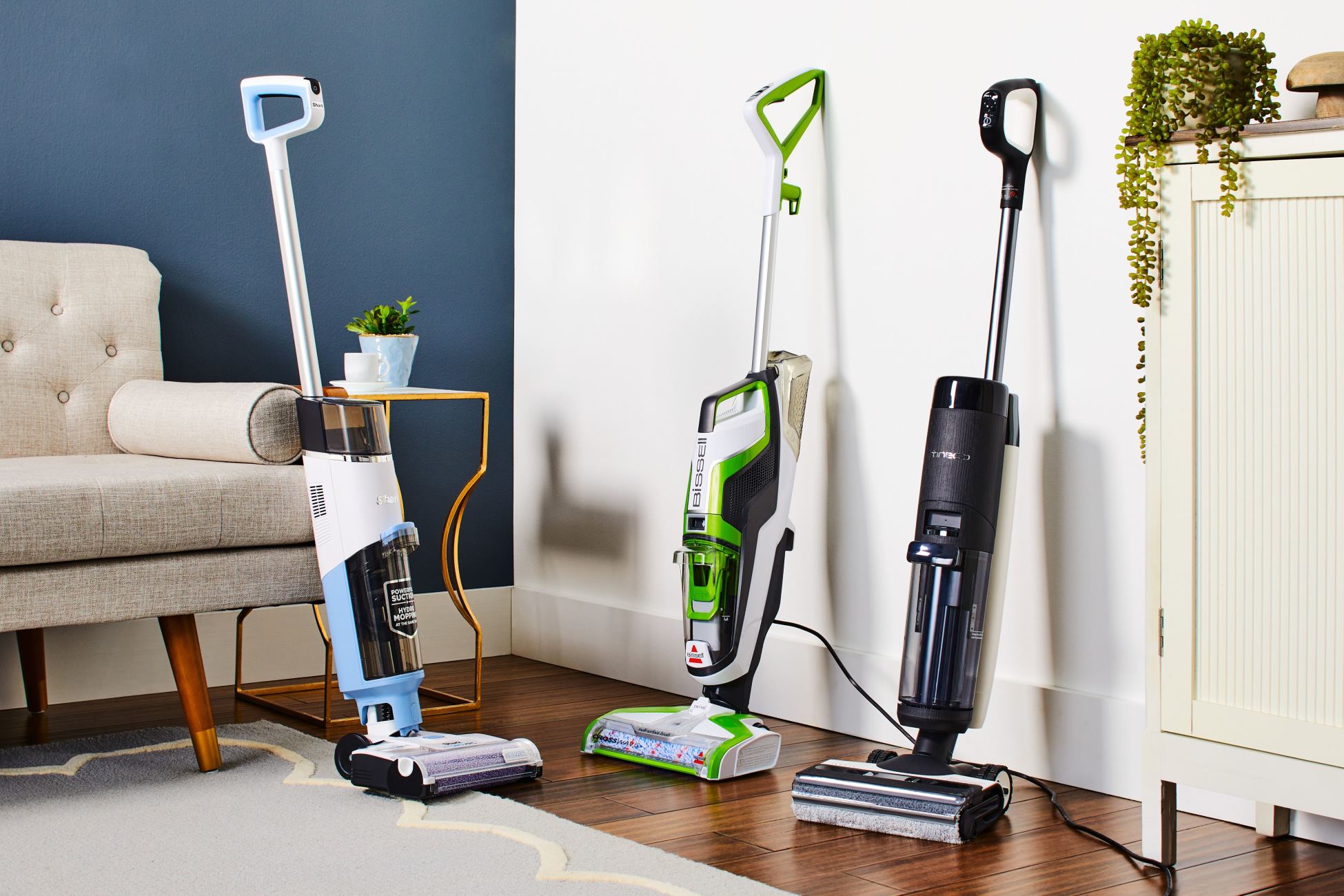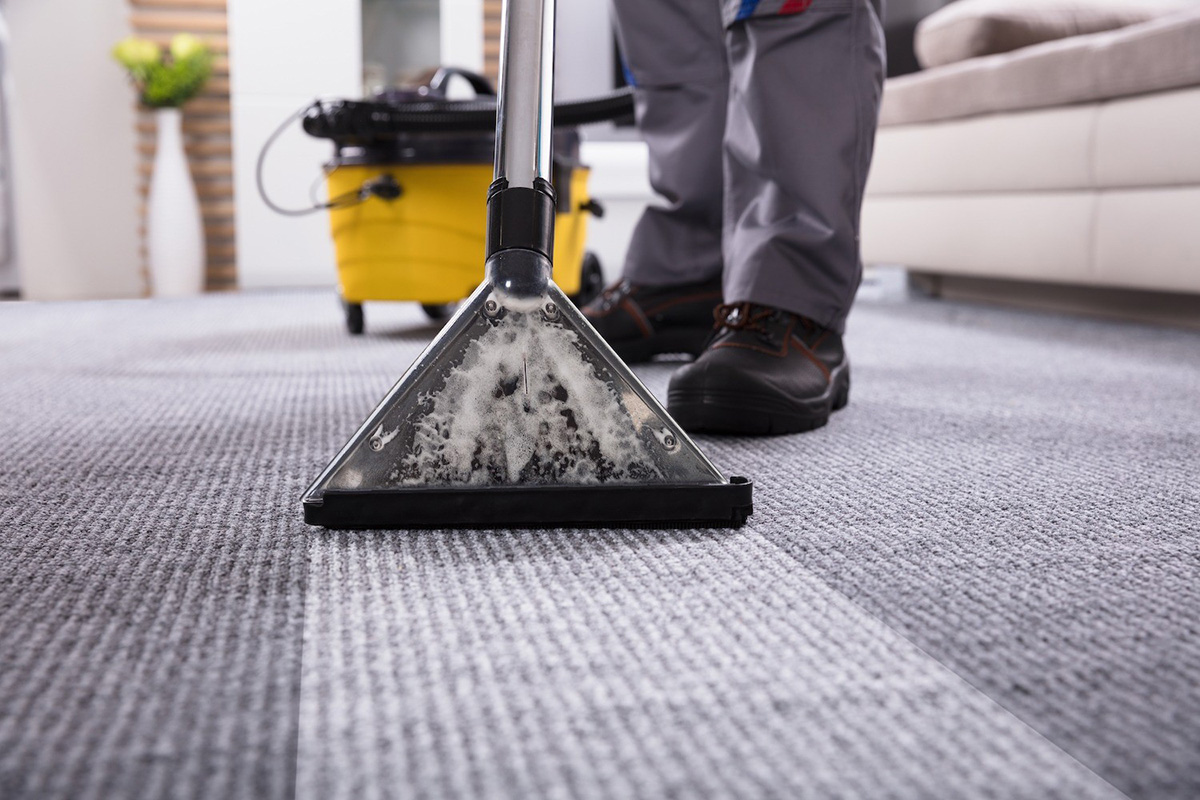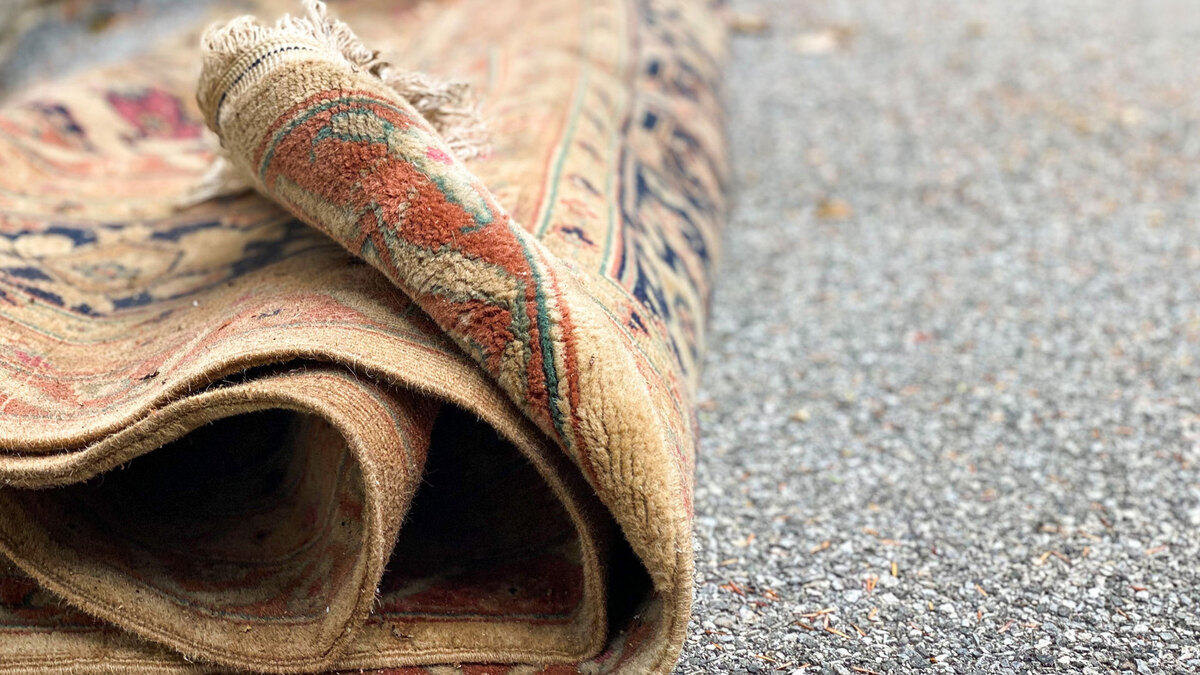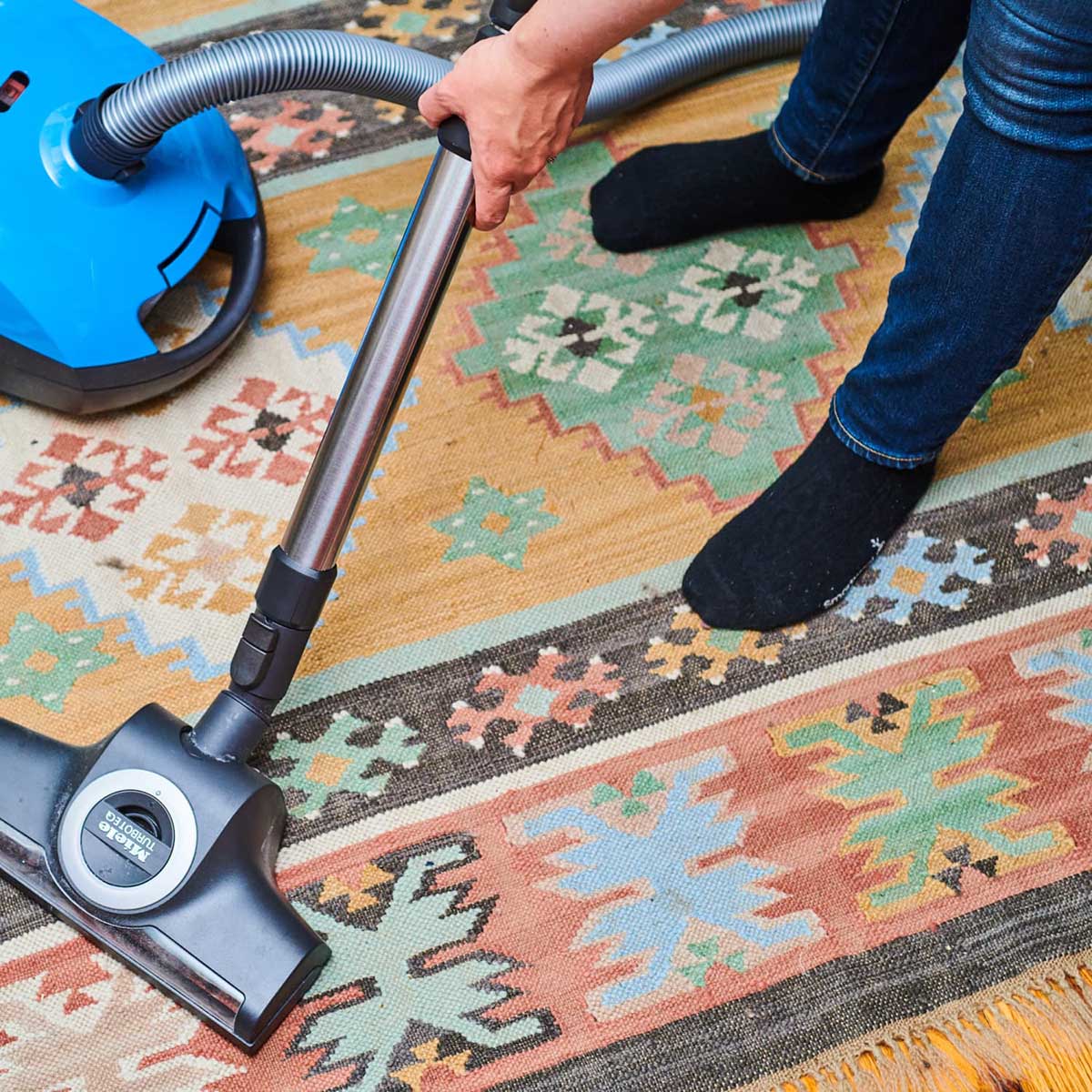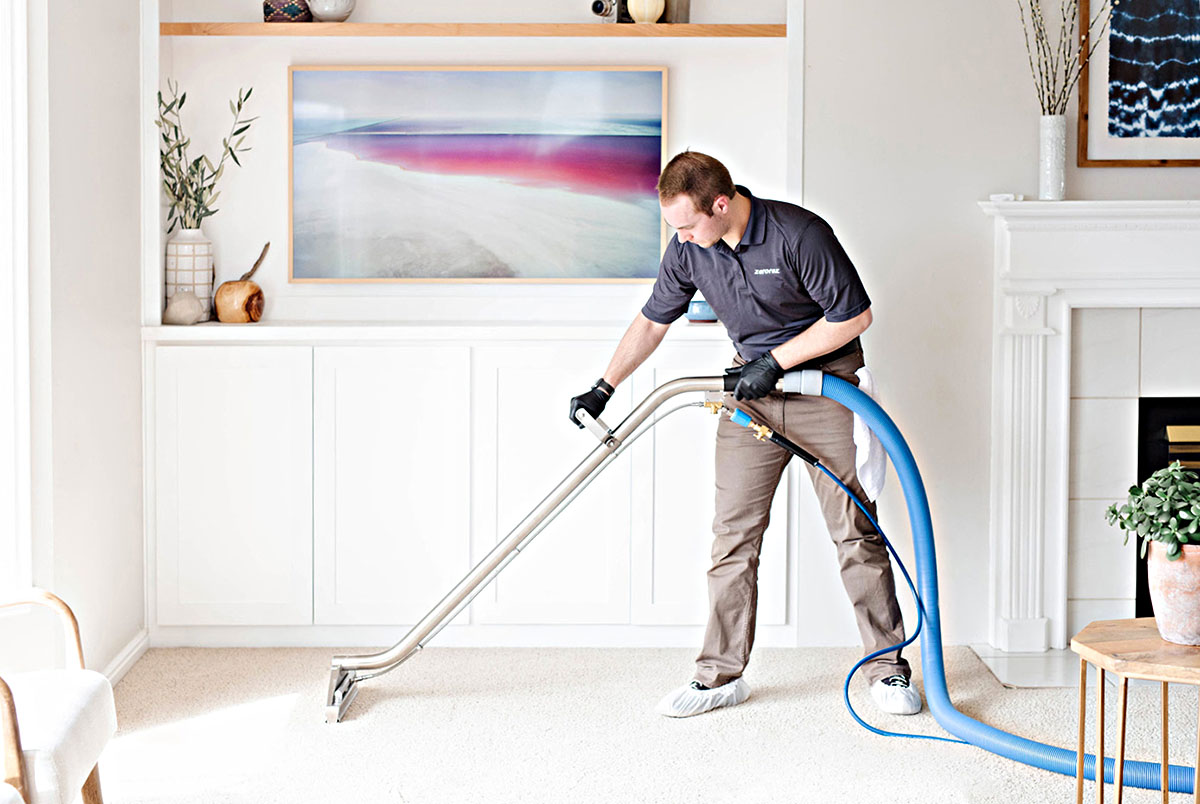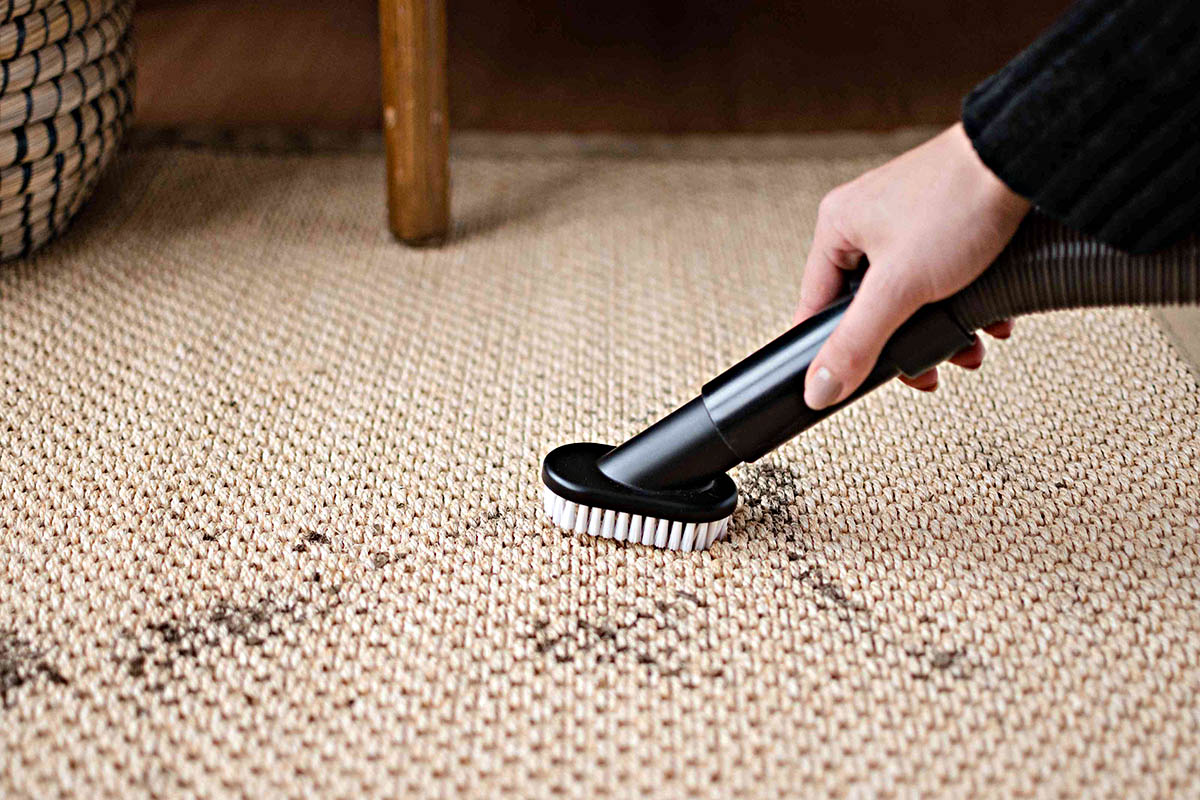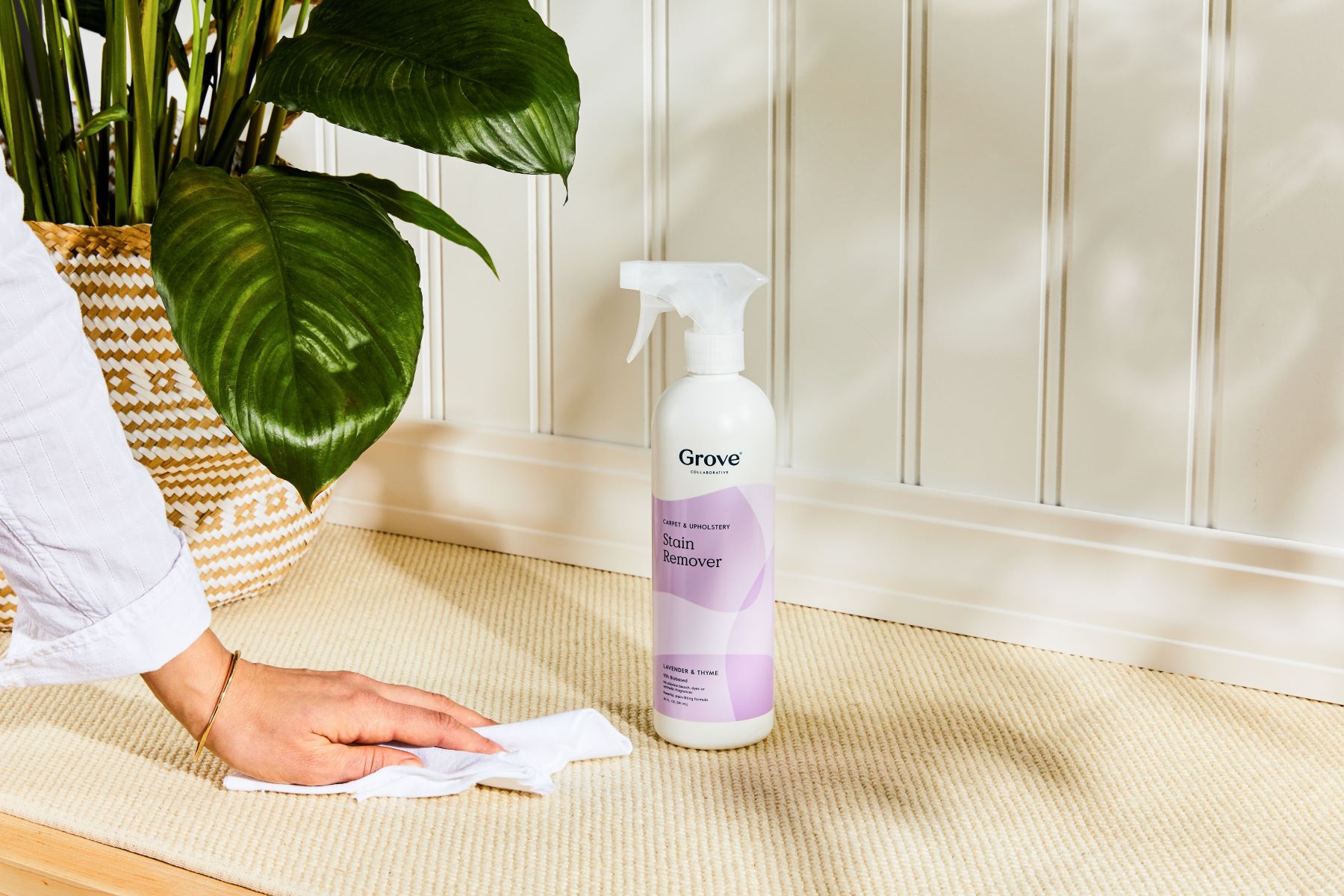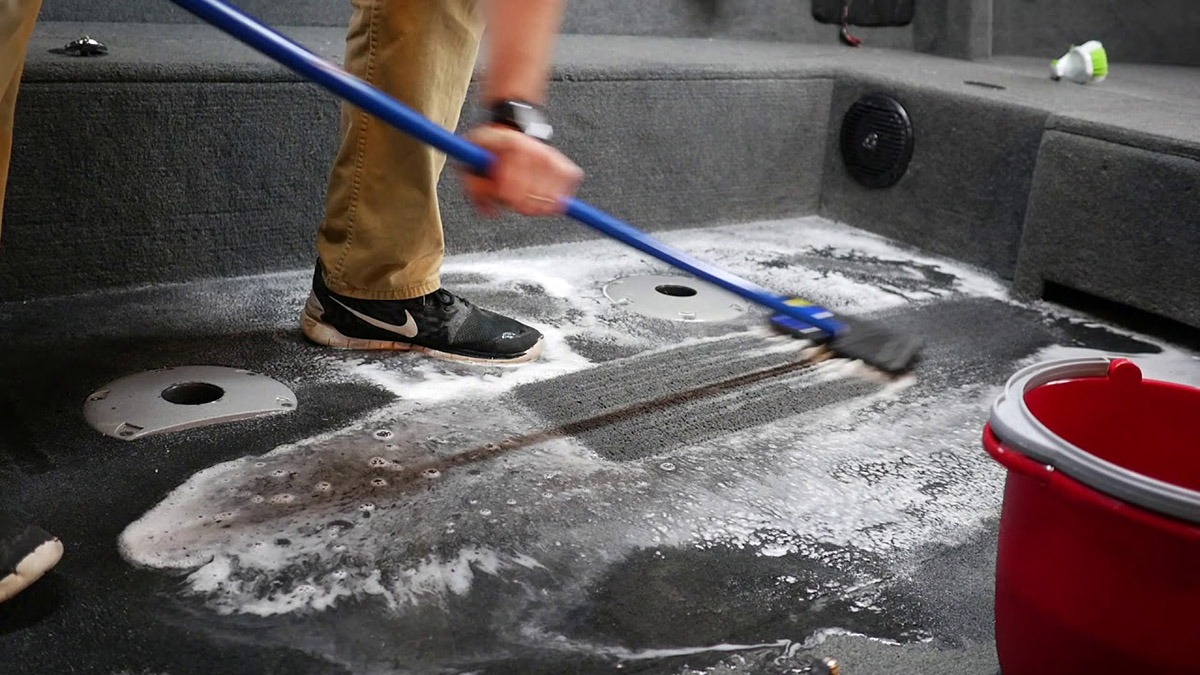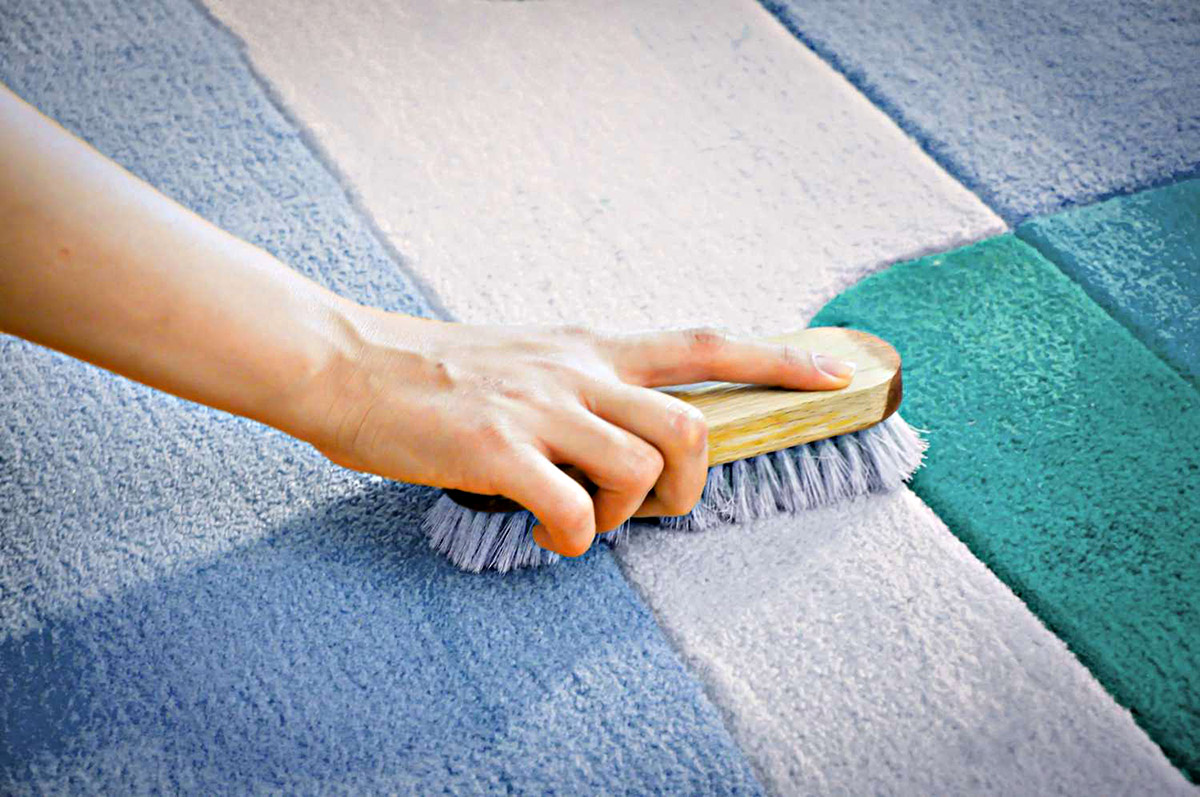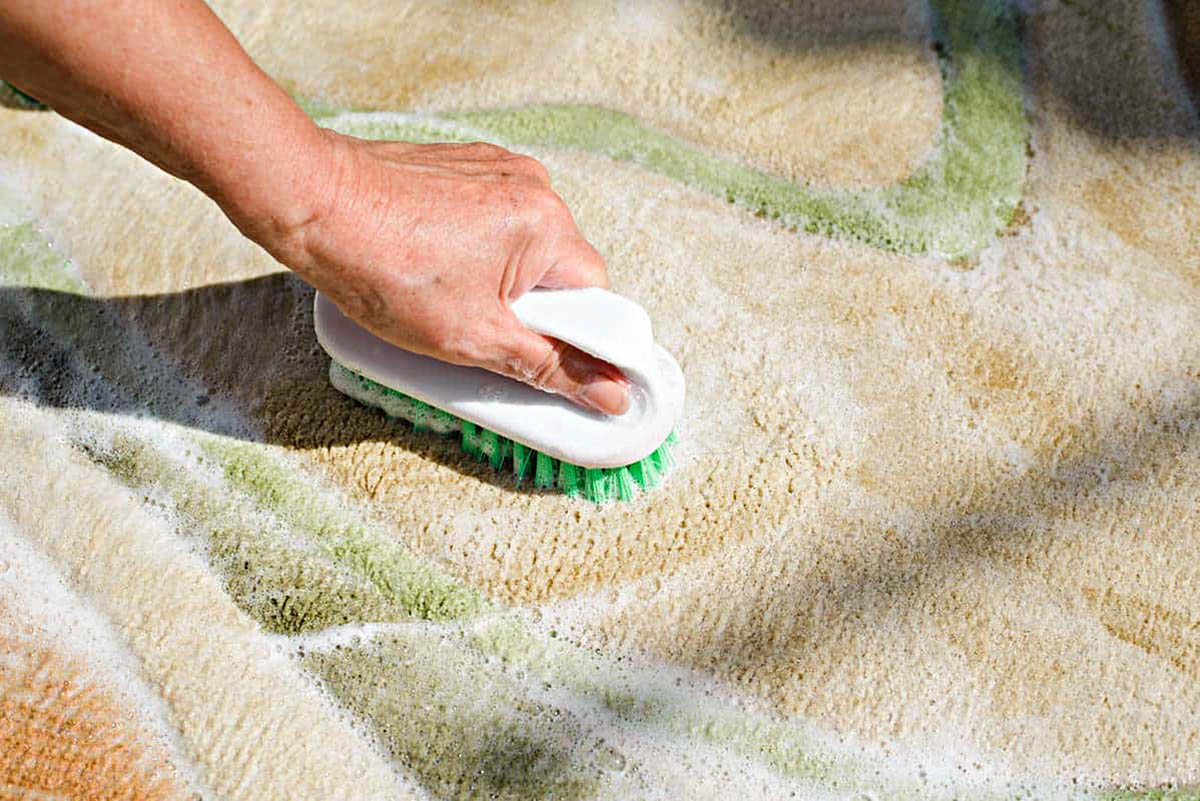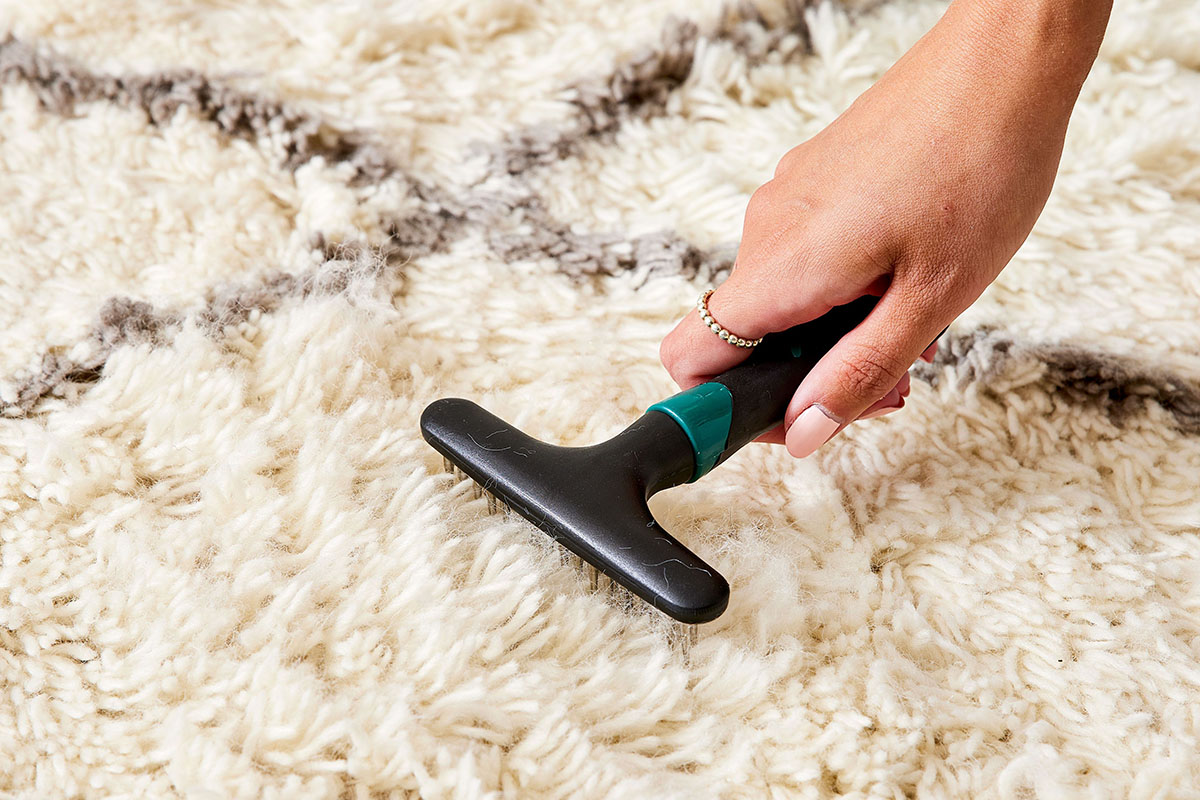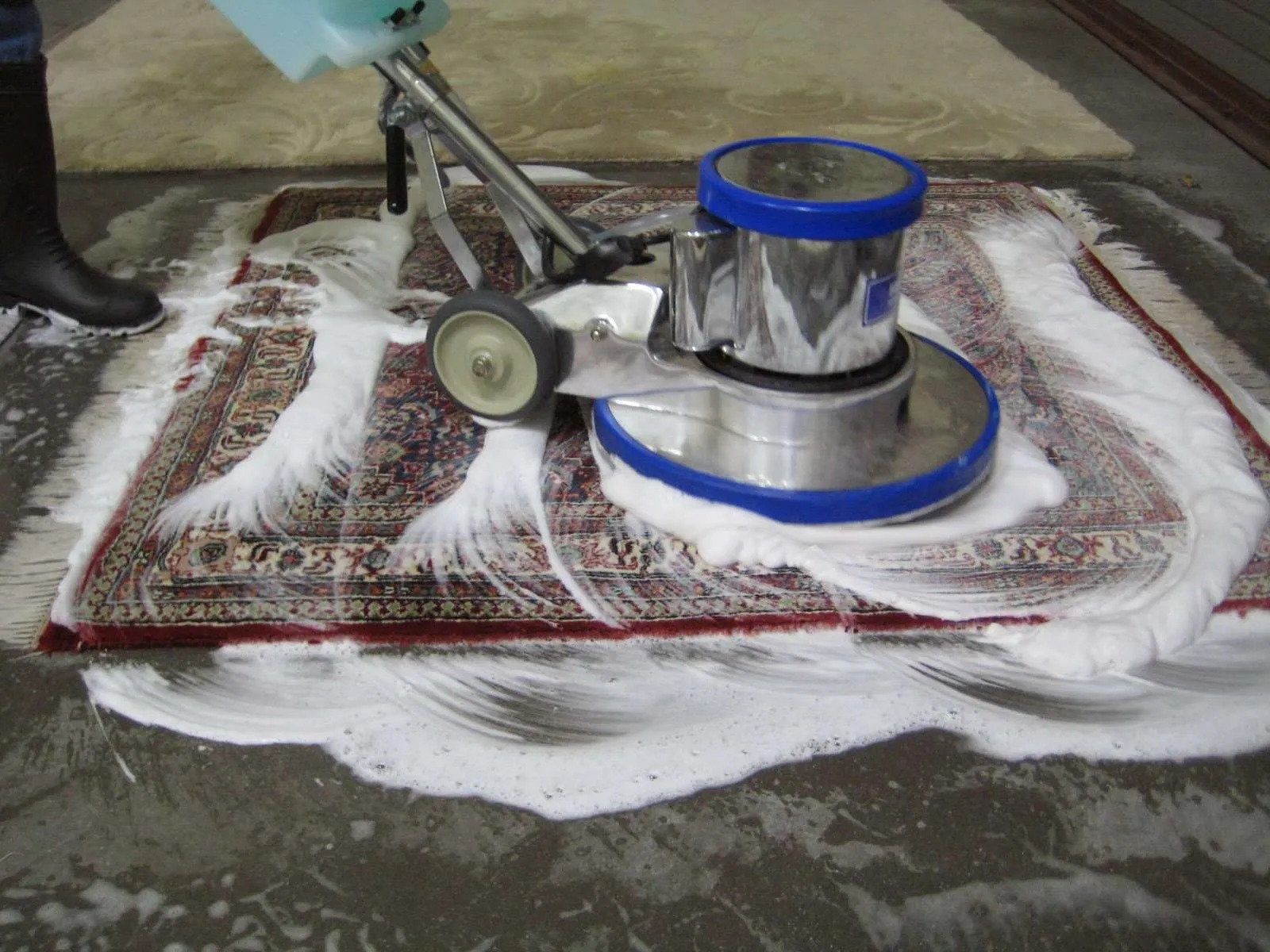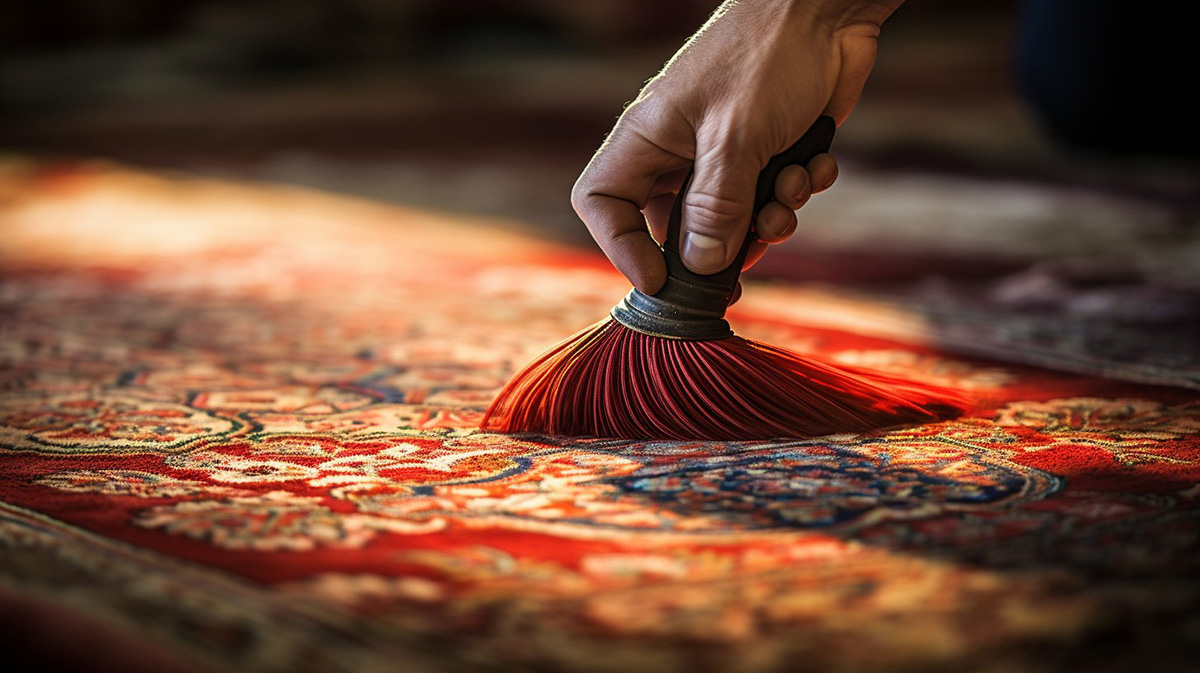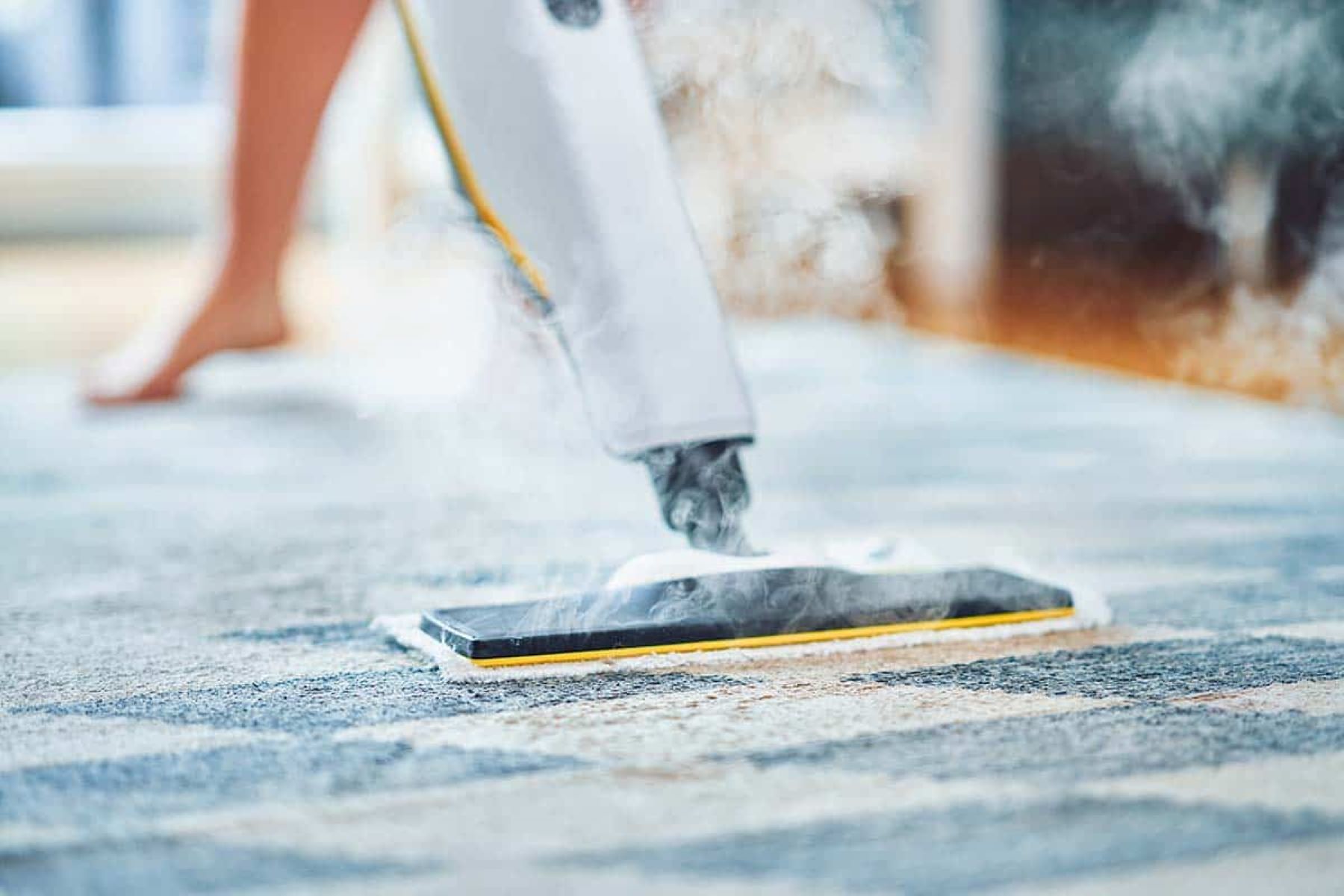

Articles
How To Clean A Soiled Carpet
Modified: October 20, 2024
Discover effective articles on how to clean a soiled carpet and restore its pristine condition. Follow our expert tips and tricks for a spotless and fresh-looking carpet.
(Many of the links in this article redirect to a specific reviewed product. Your purchase of these products through affiliate links helps to generate commission for Storables.com, at no extra cost. Learn more)
Introduction
A soiled carpet can be a real eyesore and can significantly impact the overall cleanliness of your home. Whether it’s a spill, pet accident, or general dirt buildup, dealing with a dirty carpet can be a daunting task. However, with the right approach and a little elbow grease, you can restore your carpet to its former glory.
In this article, we will guide you through the process of cleaning a soiled carpet step by step. From gathering the necessary materials to removing solid debris and applying a cleaning solution, we’ll cover everything you need to know to get your carpet looking fresh and clean again.
Before we dive into the details, it’s important to note that different types of carpets may require different cleaning methods. It’s always a good idea to check the manufacturer’s instructions or consult a professional if you’re unsure about the best approach for your specific carpet.
Now that we’ve set the stage, let’s move on to the first step in cleaning a soiled carpet: gathering the necessary materials.
Key Takeaways:
- Restore your soiled carpet to its former glory by following a step-by-step cleaning process, from gathering materials to vacuuming, ensuring a fresh and inviting atmosphere in your home.
- Regular maintenance and prompt attention to spills or stains are essential for maintaining a beautiful and clean carpet, contributing to a healthy living environment free from allergens and pollutants.
Read more: How To Clean Carpet On Stairs
Gather the necessary materials
Before you begin cleaning your soiled carpet, it’s essential to have all the necessary materials ready. Gathering the right tools and cleaning solutions will make the process much more efficient and effective. Here are the materials you’ll need:
- A vacuum cleaner: You’ll need a vacuum cleaner with a hose attachment to remove loose dirt and debris from the carpet.
- Soft-bristle brush or sponge: This will be used for gently scrubbing the stained area without damaging the fibers of the carpet.
- White cloths or paper towels: These are essential for blotting and absorbing moisture from the carpet.
- Bucket: You’ll need a bucket to mix the cleaning solution and hold the water for rinsing.
- Mild dish soap or carpet cleaning solution: Look for a mild, non-toxic, and eco-friendly dish soap or carpet cleaning solution. Avoid using harsh chemicals that could potentially damage the carpet fibers.
- Warm water: You’ll need warm water to dilute the cleaning solution and rinse the carpet.
- Optional: If you have a carpet stain remover specifically designed for a particular type of stain, make sure to have it on hand.
Now that you’ve gathered all the necessary materials, you’re well-prepared to tackle the next steps in cleaning your soiled carpet. In the following sections, we’ll guide you through the process of removing solid debris, blotting the stained area, and preparing a homemade cleaning solution. Let’s get started!
Remove any solid debris
Before you begin the actual cleaning process, it’s important to remove any solid debris present on the carpet’s surface. This can include crumbs, dirt, pet hair, or any other small particles that may have accumulated over time. Here’s how you can do it:
- Start by using a vacuum cleaner with a hose attachment. This will allow you to effectively suck up any loose dirt or debris from the carpet.
- Slowly and methodically pass the vacuum cleaner over the entire surface of the carpet, paying extra attention to areas with visible debris.
- If you encounter any larger solid debris that the vacuum cleaner can’t pick up, gently pick it up with your fingers or use a pair of tweezers to remove it.
By removing solid debris before starting the cleaning process, you’ll prevent any particles from getting smudged into the carpet fibers during the next steps. This will make the overall cleaning more effective and prevent any potential damage to the carpet.
Next, we’ll move on to the process of blotting the stained area to remove any excess liquid. This is an important step to prevent the stain from seeping deeper into the carpet layers. Stay tuned for the next section!
Blot the stained area
Once you’ve removed any solid debris from the carpet, it’s time to address the stained area. Blotting is an essential technique that allows you to absorb excess liquid and prevent the stain from spreading further. Here’s how to properly blot a stained area:
- Take a clean white cloth or paper towel and gently press it onto the stained area. Avoid rubbing the stain, as this can cause it to set deeper into the carpet fibers.
- Continue blotting the area until most of the liquid has been absorbed. Be patient and avoid applying excessive pressure, as this can spread the stain and push it deeper into the carpet.
- If the stain is particularly stubborn or has dried up, you can dampen the cloth or paper towel with a small amount of water and continue blotting. However, be cautious not to saturate the carpet.
- Repeat the blotting process until no more liquid is being absorbed by the cloth or paper towel.
- If the stain has left behind any residue or discoloration, do not worry. We will address that in the following steps.
Blotting the stained area is crucial in the early stages of carpet cleaning, as it helps to minimize the extent of the stain and prevent it from spreading further. By absorbing as much liquid as possible, you’ll make the subsequent cleaning steps more effective.
Next, we’ll move on to preparing a homemade cleaning solution that will help to tackle the stain. Stay tuned!
Prepare a homemade cleaning solution
Now that you’ve successfully blotted the stained area and removed as much excess liquid as possible, it’s time to prepare a homemade cleaning solution. This solution will help to break down and remove any remaining stain and residue from the carpet fibers. Here’s how to make a simple and effective cleaning solution:
- Fill a bucket with warm water. The water should be warm, but not hot, as hot water can potentially damage the carpet.
- Add a small amount of mild dish soap or a carpet cleaning solution to the warm water. Follow the instructions on the product label for the correct dilution ratio.
- Gently mix the water and cleaning solution together using a spoon or your hand. Make sure the solution is well-dissolved.
That’s it! Your homemade cleaning solution is now ready to be applied to the stained area. This solution is gentle enough to use on most types of carpets, but if you have a specific carpet type or sensitive fibers, it’s always a good idea to test the solution on a small, inconspicuous area first to ensure it doesn’t cause any damage or discoloration.
In the next section, we’ll guide you through the process of testing the cleaning solution on a small area of the carpet before applying it to the stained area. This precautionary step will help to ensure the solution is safe to use and won’t cause any adverse effects. Let’s keep going!
Read more: How To Clean The Edges Of A Carpet
Test the cleaning solution on a small, inconspicuous area
Before applying the cleaning solution to the stained area of your carpet, it is important to test it on a small, inconspicuous area first. This will help you determine if the solution is safe to use and will not cause any damage or discoloration to the carpet fibers. Here’s how to perform the test:
- Choose a small, hidden area of the carpet, such as a corner or under a piece of furniture.
- Apply a small amount of the cleaning solution to a clean white cloth or sponge.
- Gently dab the cloth or sponge onto the test area, making sure to moisten the carpet fibers.
- Allow the solution to sit on the test area for a few minutes, then blot it dry with a clean white cloth or paper towel.
- Observe the test area for any changes in color, texture, or damage to the carpet fibers.
If the test area shows no signs of damage or discoloration, you can proceed with confidence to the next step of applying the cleaning solution to the stained area. However, if you notice any adverse effects, such as color fading or fiber damage, discontinue the use of the cleaning solution and consider consulting a professional carpet cleaner.
By performing this simple test, you can ensure that the cleaning solution is safe to use on your carpet and avoid any potential complications or further damage.
In the next section, we’ll guide you through the process of applying the cleaning solution to the stained area and effectively removing the stain. Let’s keep going!
Apply the cleaning solution to the stained area
Now that you’ve tested the cleaning solution on a small, inconspicuous area and confirmed its safety, it’s time to apply the solution to the stained area of your carpet. This step will help to break down the remaining stain and remove any residue. Here’s how to effectively apply the cleaning solution:
- Dampen a clean white cloth or sponge with the cleaning solution. Make sure to wring out any excess liquid, as you want the cloth or sponge to be slightly damp, not soaking wet.
- Gently dab the damp cloth or sponge onto the stained area of the carpet. Start from the outside of the stain and work your way inward to avoid spreading the stain further.
- Continue to dab the stained area with the cleaning solution, allowing it to penetrate the carpet fibers. Be careful not to scrub or rub the stain, as this can cause it to set further.
- Let the cleaning solution sit on the stain for a few minutes, allowing it to work its magic.
By applying the cleaning solution in a gentle dabbing motion and allowing it to sit on the stain, you give it time to break down and remove the soiling. This will make the subsequent cleaning steps more effective in completely removing the stain from your carpet.
In the next section, we’ll guide you through the process of gently scrubbing the stained area to further assist in removing the stubborn stain. Let’s continue!
Blot the soiled area with a clean cloth to absorb as much liquid as possible. Then, mix a solution of water and mild detergent to gently scrub the stain, and finally, use a clean cloth to blot the area dry.
Scrub the stained area gently
Once you’ve applied the cleaning solution to the stained area of your carpet and allowed it to sit for a few minutes, it’s time to gently scrub the area to further assist in removing the stubborn stain. Here’s how to effectively scrub the stained area:
- Take a soft-bristle brush or sponge and moisten it with the cleaning solution.
- Starting from the outer edges of the stain, gently scrub the stained area in a circular motion. Use light pressure and be careful not to scrub too vigorously, as this can damage the carpet fibers.
- Continue scrubbing the stained area for a few minutes, focusing on the affected spot to break down the stain and lift it from the carpet fibers.
- If necessary, you can reapply a small amount of the cleaning solution to the brush or sponge as you go, ensuring that the area remains adequately moistened.
It’s important to note that not all stains will require scrubbing, especially if they are already loosening or dissipating from the cleaning solution. However, for more stubborn and deeply embedded stains, a gentle scrubbing motion can help to dislodge and remove the remaining soiling.
After gently scrubbing the stained area, proceed to the next step of rinsing the cleaned area to remove any residual cleaning solution. We’ll cover this step in detail in the following section. Keep reading!
Rinse the cleaned area with water
After you have gently scrubbed the stained area of your carpet, it’s important to rinse the cleaned area to remove any residual cleaning solution. This step ensures that no cleaning chemicals or soiling remain in the carpet fibers, leaving your carpet clean and fresh. Here’s how to effectively rinse the cleaned area:
- Fill a bucket with clean, warm water.
- Dampen a clean white cloth or sponge with the water, wringing out any excess water so that it is slightly damp.
- Gently blot the stained area, using the damp cloth or sponge to remove any remaining cleaning solution. Start from the outer edges of the stain and work your way inward.
- Continue to blot the stained area with the damp cloth or sponge, ensuring that all traces of the cleaning solution are effectively removed.
Rinsing the cleaned area is crucial as it helps to remove any residual cleaning solution and prevent it from attracting dirt or leaving behind a sticky residue. This step promotes the longevity and cleanliness of your carpet.
After rinsing the cleaned area, it’s important to absorb any excess moisture to facilitate the drying process. In the next section, we’ll guide you on how to do this effectively. Keep reading!
Read more: How To Clean A Fur Carpet
Absorb excess moisture with clean towels
After rinsing the cleaned area of your carpet, it’s essential to absorb any excess moisture to expedite the drying process and prevent water damage. Here’s how you can effectively absorb excess moisture:
- Get a stack of clean white towels or paper towels.
- Place the towels over the damp area and press down gently with your hands or use your feet to apply light pressure. This will help to absorb the moisture from the carpet fibers.
- Continue this process, replacing the towels as they become saturated, until no more moisture can be absorbed.
- For areas with excessive moisture, you may need to repeat this step several times, using dry towels each time.
Absorbing excess moisture is crucial as it helps to prevent mold and mildew growth, which can lead to unpleasant odors and potential damage to your carpet. Be thorough in this step to ensure that your carpet is left as dry as possible.
After absorbing the excess moisture, it’s time to allow your carpet to dry completely. This will be covered in the next section. Let’s move on!
Allow the carpet to dry completely
After going through the process of cleaning and absorbing excess moisture from your carpet, it’s crucial to let it dry completely. Allowing your carpet to air dry ensures that any remaining moisture evaporates, preventing the growth of mold or mildew and restoring the carpet’s texture. Here are a few tips to help facilitate the drying process:
- Ensure good air circulation: Open windows and doors or use fans to promote airflow in the room. This will help to speed up the drying process.
- Avoid walking on the damp carpet: Minimize foot traffic on the freshly cleaned and damp areas of the carpet. This will prevent the transfer of dirt and prevent any potential damage.
- Use a dehumidifier: If the humidity level in the room is high, consider using a dehumidifier to reduce moisture in the air and aid in drying.
- Allow ample time for drying: Depending on the size of the area cleaned and the humidity level, drying times can vary. It’s best to allow at least 6-8 hours for the carpet to dry completely before walking on it.
- Monitor for any lingering dampness: Check the carpet periodically by touching the cleaned area with your hand. If it still feels wet or damp, continue the drying process until the carpet is fully dry.
By giving your carpet enough time to dry completely, you ensure that it returns to its optimal condition and that no residual moisture remains to attract dirt or cause potential damage.
Once your carpet is completely dry, the final step is to vacuum it to restore its texture. We’ll cover this in the next section. Stay tuned!
Vacuum the carpet to restore its texture
After your carpet has dried completely, it’s time to give it a final touch to restore its texture and remove any loosened debris or particles. Vacuuming the carpet is an essential step that helps to fluff up the fibers and leave your carpet looking clean and refreshed. Here’s how to effectively vacuum your carpet:
- Start by removing any attachments or accessories from your vacuum cleaner, such as the brush or beater bar.
- Ensure that the vacuum cleaner bag or canister is empty or has enough capacity to handle the debris collected during the cleaning process.
- Plug in the vacuum cleaner and adjust the height setting to the appropriate level for your carpet. This will vary depending on the carpet pile and thickness.
- Slowly and methodically vacuum the entire carpeted area, using smooth and overlapping strokes. Pay extra attention to high-traffic areas, as they may need more thorough cleaning.
- For best results, make multiple passes over each section of the carpet to ensure that all dirt, debris, and loose particles are effectively removed.
- Once you have vacuumed the entire carpet, take a final look to ensure that no visible dirt or debris remains. If necessary, go over any missed spots again.
Vacuuming the carpet not only restores its texture but also helps to remove any remnants of cleaning solution or residue that may have been left behind. It leaves your carpet looking clean, fresh, and ready to be enjoyed.
Congratulations! You have successfully gone through the process of cleaning a soiled carpet. By following these steps, you have restored the appearance and cleanliness of your carpet, leaving a fresh and inviting atmosphere in your home.
Remember, regular maintenance and prompt attention to spills or stains can help to prolong the life of your carpet and keep it looking its best. If you encounter stubborn stains or larger areas of soiling that cannot be effectively cleaned with DIY methods, don’t hesitate to seek professional carpet cleaning services.
By incorporating these cleaning practices into your routine, you can maintain a beautiful and clean carpet for years to come.
Conclusion
Cleaning a soiled carpet can be a daunting task, but with the right approach and a little effort, you can restore its beauty and cleanliness. By following the step-by-step guide outlined in this article, you can effectively remove stains and dirt from your carpet, leaving it fresh and revitalized.
Remember to gather all the necessary materials before starting the cleaning process and remove any solid debris from the carpet’s surface. Blot the stained area to absorb excess liquid and prepare a homemade cleaning solution to tackle the stubborn stains. Perform a test on a small, inconspicuous area to ensure the cleaning solution is safe to use.
Apply the cleaning solution to the stained area and gently scrub the carpet to further assist in removing the soiling. Rinse the cleaned area with water and absorb any excess moisture using clean towels. Give your carpet ample time to dry completely before vacuuming it to restore its texture.
Regular maintenance and prompt attention to spills or stains are essential to keep your carpet looking its best. If you encounter stubborn stains or larger areas of soiling that cannot be effectively cleaned with DIY methods, consider seeking professional carpet cleaning services to ensure a thorough and deep clean.
By incorporating these cleaning practices into your routine, you can maintain a beautiful and clean carpet for years to come. A clean carpet not only enhances the appearance of your home but also contributes to a healthy living environment free from allergens and pollutants.
So, roll up your sleeves, gather your cleaning materials, and get ready to transform your soiled carpet into a fresh and inviting space. Your efforts will be rewarded with a clean and beautiful carpet that you can enjoy for years to come!
Happy cleaning!
Frequently Asked Questions about How To Clean A Soiled Carpet
Was this page helpful?
At Storables.com, we guarantee accurate and reliable information. Our content, validated by Expert Board Contributors, is crafted following stringent Editorial Policies. We're committed to providing you with well-researched, expert-backed insights for all your informational needs.
